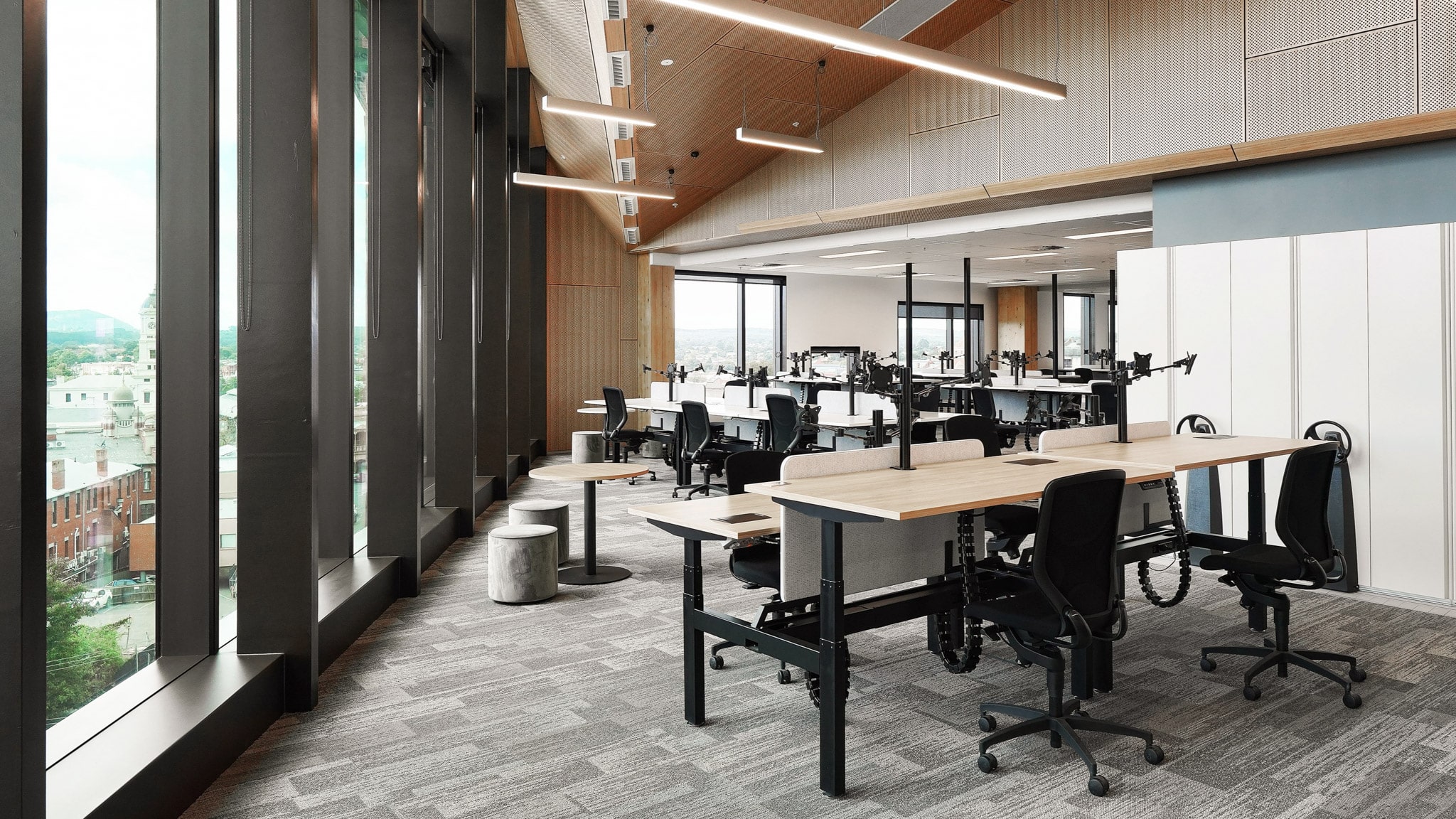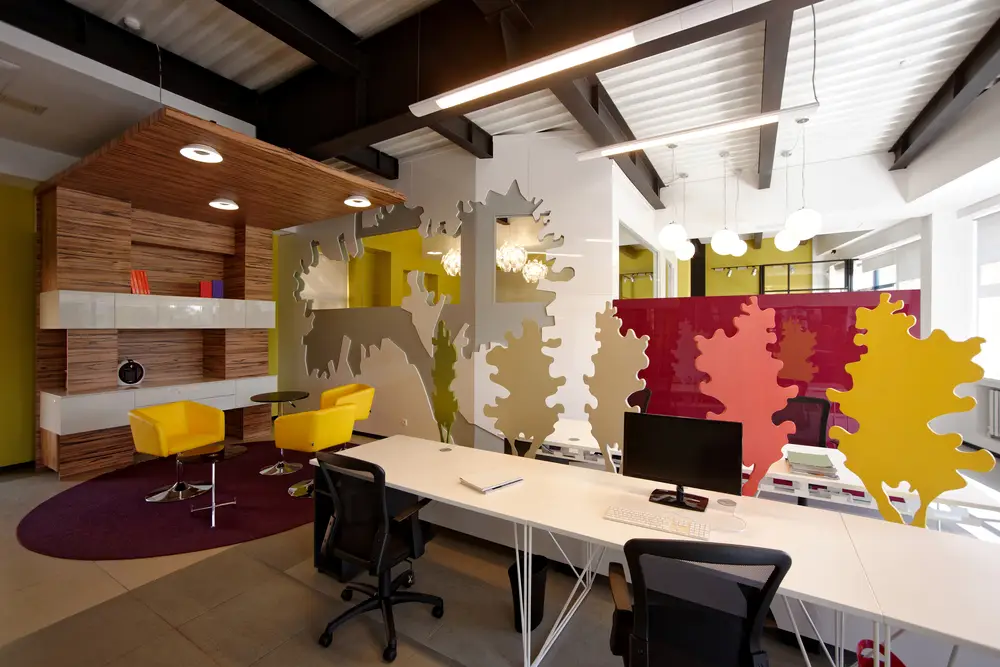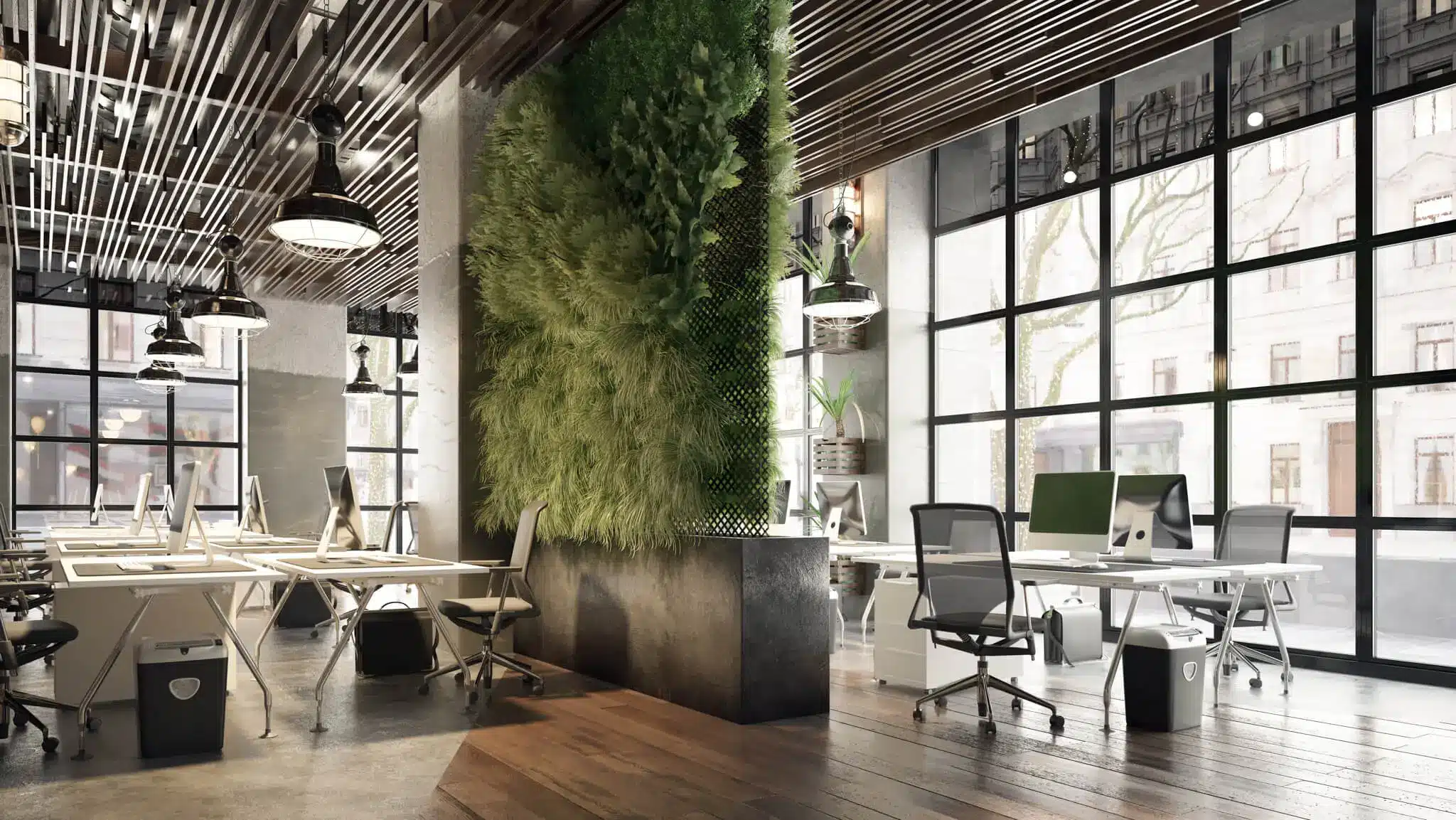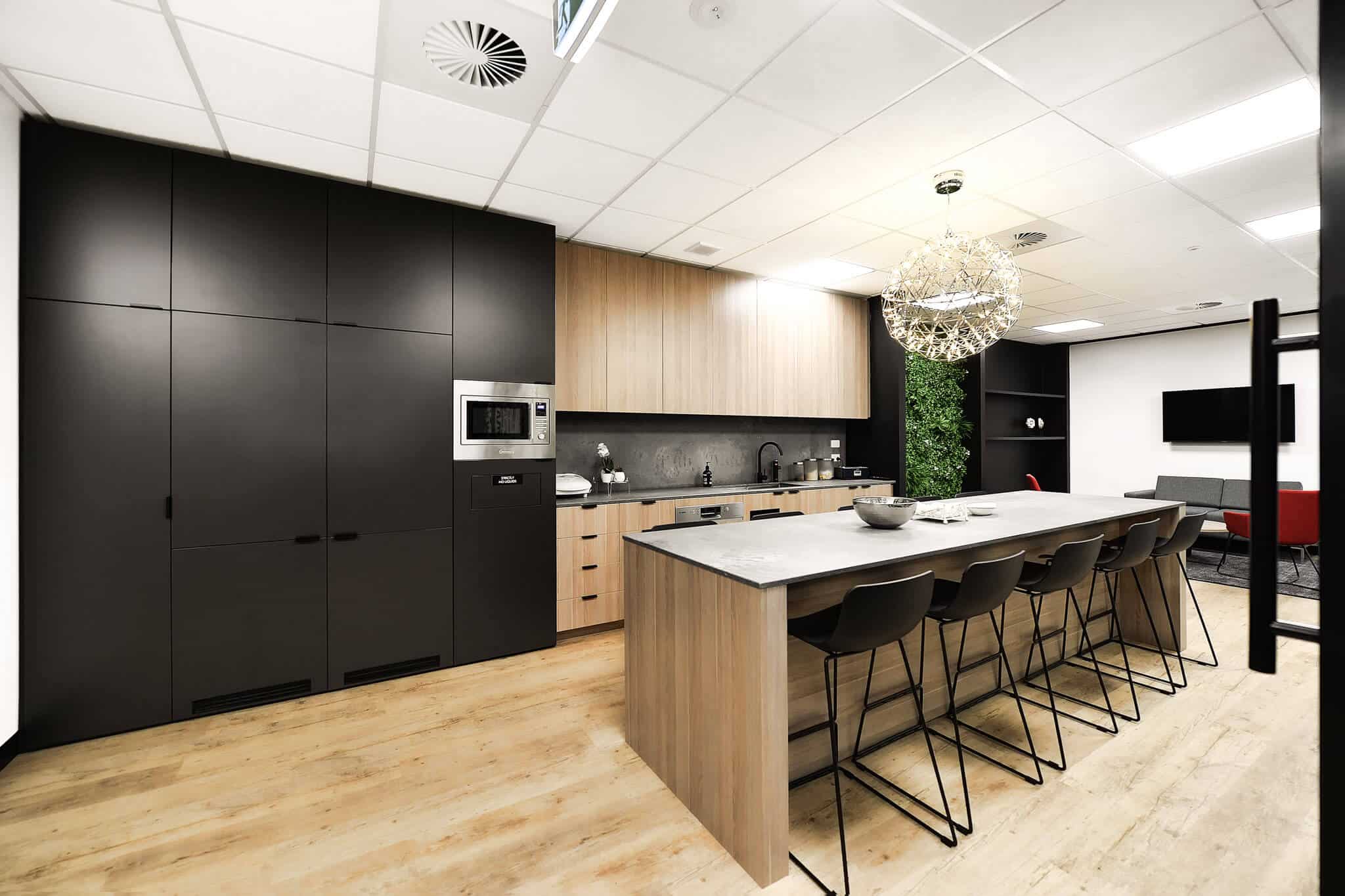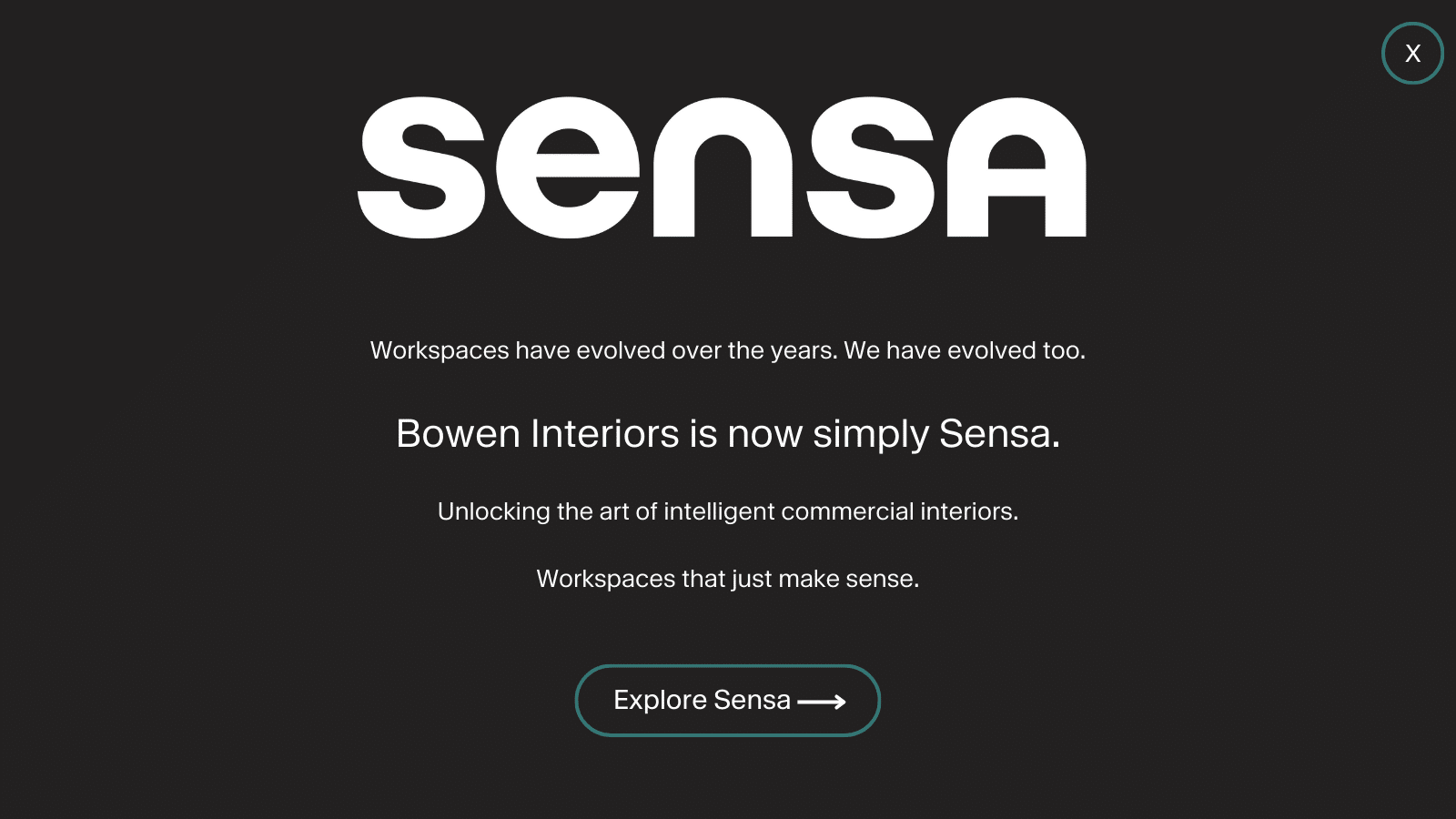In the post-pandemic era, many organisations have adopted remote or hybrid work environments which often means employees have set up their “perfect” workstation at home – and are looking for the same comforts when they are in the office.
A key part of that will be ensuring that they have a workspace that is comfortable, helps your team to maintain focus and doesn’t act as a “turn off” to the in-office experience. This means that companies need to be providing employees with an ergonomic workstation.
Designed to minimise discomfort and muscle strain, an ergonomic workstation allows your team to work for longer periods without experiencing fatigue.
Here, we’ll discuss 7 critical aspects of an ergonomically designed workstation.
7 Things Needed for an Ergonomically Correct Workstation

1) Work Surface Height at a Neutral Position
The height of the work surface is critical for maintaining a neutral posture. When the work surface is too high or too low, employees will be forced to hunch their shoulders or bend their wrists, which can lead to pain and discomfort.
Ideally, the work surface should be at a height that allows forearms to be parallel to the ground while shoulders remain relaxed.
Also, ensure that there is enough clearance for knees, thighs, and feet underneath the desk. If the desk is too low and can’t be adjusted, put sturdy boards under the legs to adjust the height. Conversely, if the desk is too high, adjust the chair’s height to maintain a neutral position. It’s also a good idea to supply your team with footrests to support their feet as needed.
Height-adjustable desks combine form, function and flexibility to provide a range of benefits to your team. Height-adjustable desks promote proper posture, minimise strain, and encourage movement throughout the workday. Transforming from a sitting to a standing position in mere seconds, your team can effortlessly switch between heights to find the perfect fit for their individual body and work style.
If the desk has a hard edge, it’s possible to minimise discomfort by padding the edge with a soft material or using a soft wrist rest.
Encourage your team to avoid storing items underneath their desk, as this can further reduce clearance and cause discomfort.
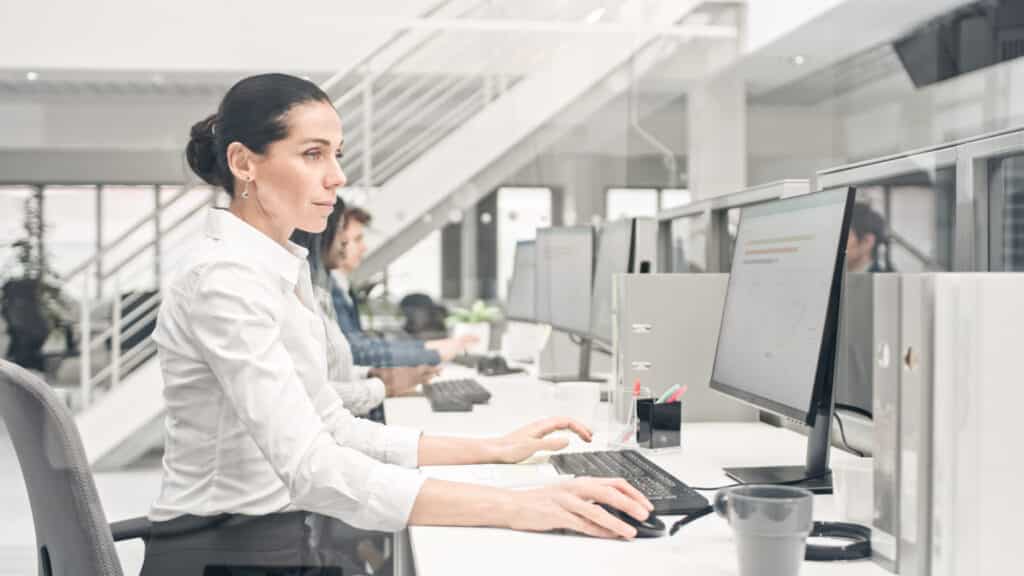
2) A Display Set at a Comfortable Height in a Suitable Environment
The computer monitor should be set at a height that allows the user to look straight ahead without tilting their head up or down. The top of the screen should be at or slightly below eye level, which can be achieved in part by choosing a proper desk height, by opting for height-adjustable desks to enable your team to position for themselves, or by providing monitors with height-adjustable stands or arms.
To create an optimal monitor setup, begin by centring the monitor directly in front of the keyboard. The top third of the monitor should be positioned at the users’ seated eye level, adjusting as needed for bifocal wearers. The monitor should be within arm’s length, so there’s no strain on users’ neck or shoulders to view it.

3) A Comfortable Chair That Helps Maintain a Neutral Spine
The office chair is one of the most critical components of the workstation. It should be comfortable and provide adequate spinal support.
Look for chairs that have adjustable height, backrest, and armrests to accommodate different body measurements. When seated, users should be able to keep their feet flat on the ground and thighs parallel to the ground. Office chairs with neck support are also recommended to relieve neck pain after prolonged periods of work.
Ergonomic chairs offer a range of benefits, including:
- Adjustable seat height that allows your team to easily adjust the seat height, ensuring their feet are flat on the floor and their knees are at a 90-degree angle. This helps maintain proper posture and reduces the risk of developing musculoskeletal problems.
- Lumbar support that conforms to the natural curve of the spine, reducing strain on the lower back and preventing long-term back issues.
- Adjustable armrests so your team can position their arms comfortably, reducing strain on the shoulders and wrists, and promoting better posture while typing or performing other tasks.
- Adjustable seat depth so your team have adequate space between the back of their knees and the edge of the seat, improving circulation and reducing pressure on the legs.
- Adjustable seat tilt, including tilt tension and tilt lock, so your team can find the most comfortable and supportive position for their unique needs.
- Adjustable 360-degree swivel so your team can easily rotate in their chair, reducing strain from excessive reaching and promoting better movement and flexibility in the workspace.
- Breathable materials that promote airflow, such as mesh or ventilated foam, keeping your team cool and comfortable throughout the workday.
Standing desks have also increased in popularity in recent years. They enable employees to work while they’re standing to minimise the discomfort caused by sitting for too long.

4) Good Lighting
Proper lighting is essential for preventing eye strain and headaches. Ensure that your workspace is well-lit, ideally by natural light as it has proven to promote worker satisfaction and productivity. If you’re using artificial light, use a lamp that provides adequate illumination without causing glare or shadows.
To reduce glare, carefully position the screen at a right angle to windows and adjust curtains or blinds as necessary. Additionally, adjust the vertical screen angle and screen controls to minimize glare from overhead lights. Also, consider using optical glass glare filters, light filters, or secondary task lighting to further reduce glare.

5) An External Keyboard
An ergonomic keyboard can help reduce strain on wrists and hands. Look for keyboards that have a split design or a curved layout, which allows users to type with hands in a more natural position.
Seek to provide keyboards adjustable for height and tilt according to sitting position which means users avoid resting their palms on their desk while typing. Additionally, ensure users position their keyboard at a height that allows their forearms to be parallel to the ground.
6) A Fitting Mouse
The mouse should fit comfortably in the users’ hand, allowing click and scroll without experiencing discomfort. Also, make sure that the mouse is positioned close to your keyboard, eliminating the need to reach for it.
Ensure users maintain a straight wrist position keeping their upper arms close to the body while using the mouse. Train your team on the importance of keeping their hands are at or slightly below the level of their elbows.
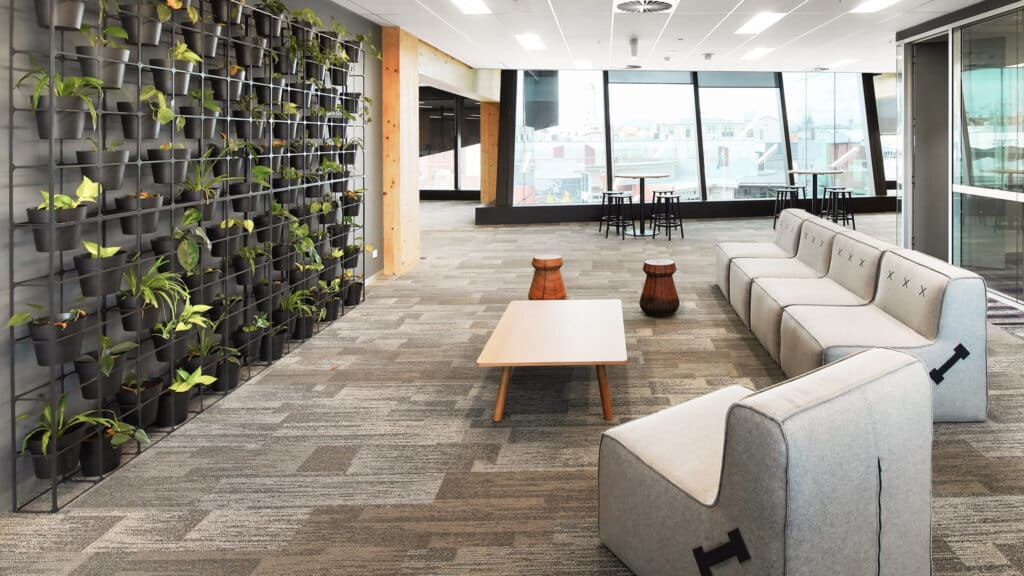
7) Things That Reduce Work-Related Stress
Finally, consider offering extra amenities in their office to help your staff reduce stress while they are working. This could include plants on every desk, stress balls, or a subsidised meditation app available for their phone. Encourage the team to take regular breaks and engage in relaxation techniques as these can help prevent burnout and boost productivity.
Providing stress-relieving items in your workspace helps the team unwind as stress or anxiety can lead to muscle tension, impeding productivity and creating a cycle of stress.
Want to Discuss How Workstation Ergonomics Can Be Part of Your Next Interior Design Project?
Reach out to us now to learn how we can incorporate ergonomics in your workstations.
